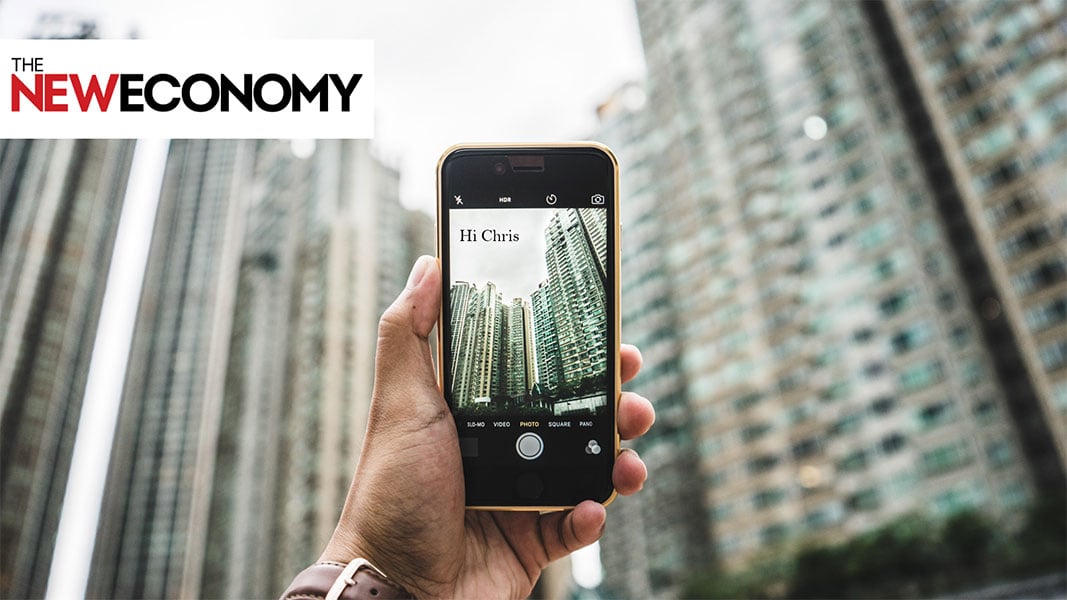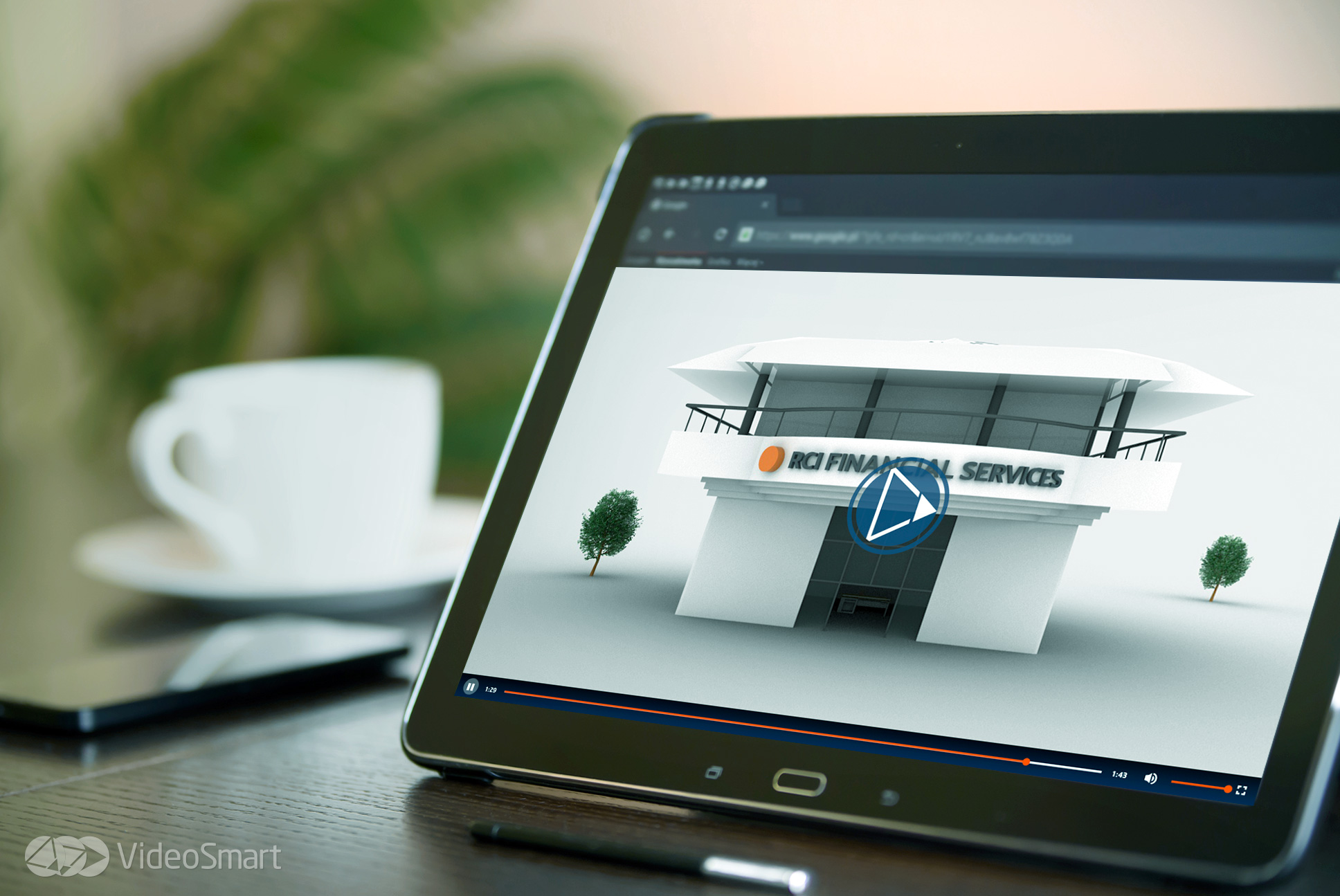Personalised Communications Step Into The Future

Article first published by The New Economy
Marketing has lost its personal side, focusing on data harvesting and not on forming a bond. Personalised communications look set to change that
The digital age has transformed the marketing and advertising landscape, shifting it from the limited realms of radio and television straight into the palms of our hands, every minute of the day.
Through social media and data analytics, companies are now able to capture precise details about their consumers, connecting with them on a much deeper level than ever before.
Although an evolution in marketing is certainly underway, it has become stuck in limbo. Issues relating to trust and wavering loyalty have made it harder for firms in highly competitive markets to reach out, capture and retain customers.
Likewise, rapidly changing consumer expectations have become a huge challenge, with individuals now demanding enhanced value and tailored campaigns as the minimum. Yet, amid all this, the traditional format of conveying a message has remained intact – in text form, generic and detached, very much an anachronism.
The Modern Consumer
Without a doubt, the biggest change that marketing has seen in recent years has been the rise of social media and the volume of data that now accompanies consumer purchase and usage behaviour.
“Most people think this is only occurring online, but consumers are being tracked offline as well, with loyalty programmes and other tracking technology, for example, RfID, CCTV and GPS”, said Dr Kirk Plangger, Lecturer in Marketing at King’s College London.
Consumer Tracking
The masses of data collated from consumer tracking have, therefore, become a hurdle for marketers charged with discovering new insights into consumer behaviour and devising corresponding strategies.
While social media has given organisations a global platform, irrespective of their size, it has also given them a new range of concerns, particularly regarding the speed at which bad news travels.
Consumers are Shaping the Markets
What’s more, with so much information available, consumers can make more measured and informed decisions when it comes to the purchases they make and the services they use.
“Consumers are much wiser now, much more selective, much more careful and much more powerful in terms of networking, word of mouth, referrals and so forth”, said Professor Shintaro Okazaki, Editor-in-Chief of the Journal of Advertising.
With this power, consumers are shaping the markets they interact with. They demand greater value and more engagement, in addition to some level of personal involvement.
“One of the most important changes in marketing is the co-creation of value, because now consumers want to participate to create something together”, Okazaki continued.
Web 2.0
“Before Web 2.0, we were very reactive and we received information in a very unidirectional way from firms. But, nowadays, because we have tools such as social networking sites, we can transmit our opinions more proactively.”
As such, it is crucial that companies interact with their consumers more effectively and involve them in some way, which has given rise to the term ‘prosumer’.
“Prosumers have much more power and they participate with each other through social media”, Okazaki said. “Firms have to listen to them to create more effective personalised marketing communications.”
Generalised Marketing vs Personalised communications
Marketing campaigns can no longer be generalised for mass audiences. So familiar are we with the constant stream of advertising that pervades our lives, through every format and on every screen, that we have become immune to it.
Personalised communications, on the other hand, still have the power to reach out and deliver a message; they can provide that missing link between individuals and the faceless corporations that influence their lives.
Personalised Marketing
“Personalised marketing not only impacts behaviour, but also consumer attitudes, feelings and associations”, Plangger explained.
“Consumers respond differently to personalised marketing, but [the reaction] depends on the execution. If the marketer is too blatant with the use of consumer data, many consumers may have negative attitudes and feelings toward the brand.
But, if the marketer is careful about using consumer data, many consumers may have very positive feelings that could have a significant impact on satisfaction, word of mouth, consumer engagement and retention.”
Bespoke Ads
While many approaches to marketing and advertising remain out-dated, recent developments in technology are propelling personalised campaigns in line with what we have come to expect today.
One company moving in this direction is VideoSmart, a new service that allows companies to instantly send out thousands of personalised videos for each and every recipient.
VideoSmart - Personalised Videos
VideoSmart can combine a generic piece of film with a customer’s data to produce a video tailored specifically to them, akin to a personalised TV advert delivered straight to their mobile device or desktop.
“We work with the client to create an advert that reflects their brand’s personality and tonality, while ensuring that we have clearly articulated their marketing message”, said Sami Aintaoui, Director at VideoSmart.
“We then overlay the customer data so that all the content within that video is personal to the recipient, and that means that any imagery, maps, narration, text, music, or even the order of the scenes that are displayed, are all specific to that customer.”
Communications via Video
The idea behind delivering communications via video is that, through this medium, customers are more likely to recall the message that has been conveyed, and are more likely to understand it as well.
“I absorb information better in visual form, other people are audio learners, others prefer text. Traditionally as businesses, we’ve only ever communicated via the latter”, Aintaoui said.
“With personalised video, we leverage all three, which means we’re satisfying everyone and it also means that a company’s messages are better retained by the customer.”
Create Unique Brands
Indeed, better communications via such media can also help to satisfy increasingly stringent regulations by ensuring that a customer fully understands the product or service they are buying into.
“If we can alleviate some of the pressures that businesses feel from regulators, their marketers will start to get back what marketers do, which is building brands, building relationships with customers and allowing them to create unique brands that people actually have an affinity to”, Aintaoui explained.
New Phase
By communicating with potential and existing customers in a more direct, personable manner, as opposed to doing so through a jargon-heavy, corporate block of text, consumers are more likely to stop and listen, and less likely to ‘shop around’.
Essentially, the medium of video can break existing barriers between companies and consumers, create a more frictionless customer journey and significantly improve customer relationship management systems.
“It could be used across the customer relationship lifecycle, whether that’s acquiring, growing, on-boarding or retaining customers”, added Aintaoui.
Online Shopping - Winning Back Lapsed Customers
This approach is particularly useful when it comes to winning back lapsed customers, which is increasingly important as online shopping continues to expand.
Around 63 percent of potential online transactions, or some $4trn worth of merchandise, will be abandoned in the ‘shopping cart’ in 2016, according to a report by BI Intelligence.
While this figure is a huge concern for retailers, the research also indicates conversion rates can be improved by retargeting shoppers via email after they have left a website.
Possibilities of Personalised Videos are Boundless
According to digital marketing platform Listrak, emails sent around three hours after a shopping cart has been abandoned have a 20 percent click-through rate.
Now, imagine the same approach, but with a video adapted specifically for the consumer and their purchase.
It starts by addressing them by name, and then perhaps offers a discount or free delivery; it may answer a query they had about the product and provide some information the absence of which caused their initial hesitation.
Simply put, the possibilities of personalised videos are boundless. They can take client relationships to a whole new level, and even form a connection that lasts a lifetime.
The Future of Marketing
As technology continues to march forward, marketers have fallen behind.
While wading through reams of consumer data and combatting the explosion of social media culture, they have unwittingly neglected the importance of engaging with customers, building relationships and establishing loyalty.
Now, however, the technology finally exists for these traditional pillars to be combined with a modern data-led approach. The future of marketing has very much arrived.
For more information about how your customers can benefit from Personalised Videos, contact hello@videosmart.com


